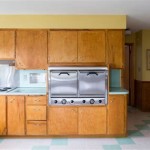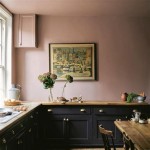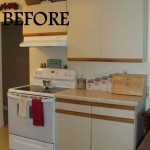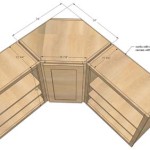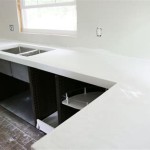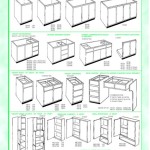What Color Cabinets Go With Wood Countertops
Wood countertops bring a sense of warmth, natural beauty, and timeless appeal to any kitchen. Their inherent variations in grain, color, and texture make them a versatile design element. Selecting the right cabinet color, however, is crucial for creating a cohesive and aesthetically pleasing space. The pairing of wood countertops with cabinets is a critical design decision, influencing the overall ambiance and style of the kitchen. This pairing requires careful consideration of several factors, including the wood species, the stain or finish applied to the countertop, the existing architectural style of the home, and the desired aesthetic.
The inherent warmth of wood necessitates considering how cabinet colors either complement or contrast with that warmth. A successful design balances the natural tones of the wood with a cabinet color that enhances the beauty of both elements. A poorly chosen cabinet color can clash with the wood, making the entire kitchen feel disjointed and unappealing.
This article will explore various cabinet color options that harmonize well with wood countertops, providing guidance for homeowners seeking to create a stylish and functional kitchen. The following considerations will influence the choices discussed: light levels in the kitchen, the specific type of wood used for the countertops (e.g., butcher block, walnut, maple), and the overall design goals.
Understanding the Undertones of Wood Countertops
Before selecting a cabinet color, it is essential to analyze the undertones present in the wood countertop. Undertones are the subtle hues that underlie the dominant color of the wood, influencing how it interacts with other colors in the room. Identifying these undertones is critical for choosing cabinet colors that complement the wood and create a harmonious color scheme.
For example, some wood species, like cherry or mahogany, possess warm red undertones. These undertones pair well with cabinet colors that share similar warm hues, such as creams, warm grays, or even deep greens. In contrast, woods like maple or birch often have cooler, more neutral undertones. These woods tend to be more versatile and can be paired with a wider range of cabinet colors, including cooler grays, blues, or even crisp whites. The stain or finish applied to the wood also impacts the undertones. A clear finish reveals the natural color of the wood, while a stain can enhance or alter the undertones.
Butcher block countertops, typically made from maple or birch, often present a light, neutral palette. Considering the specific characteristics of the butcher block, the undertones of the individual wood strips should be noted. Walnut countertops, on the other hand, are known for their rich, dark brown color with warm undertones. The grain pattern and variations in color within the walnut also influence the perceived undertones.
To accurately identify the undertones, it is advisable to examine the wood countertop in natural light. Comparing it to color swatches or paint chips can also help in determining the dominant undertones. Once the undertones are identified, it becomes much easier to select cabinet colors that will complement the wood and create a cohesive design.
Classic White Cabinets: A Timeless Pairing
White cabinets are a perennial favorite for kitchens, offering a clean, bright, and versatile backdrop for any countertop material. When paired with wood countertops, white cabinets create a classic and inviting space. The combination of the warmth of the wood with the crispness of the white provides a balanced and timeless aesthetic.
However, not all whites are created equal. The specific shade of white chosen is crucial for achieving the desired effect. Bright whites, with their cool undertones, can create a stark contrast with wood countertops, making the wood appear warmer and more prominent. This can be a good choice for those seeking a modern and minimalist look.
Off-whites or creamy whites, with their warmer undertones, tend to blend more seamlessly with wood countertops, creating a softer and more inviting atmosphere. These warmer whites are particularly well-suited for kitchens with traditional or farmhouse-style design elements. The specific wood species also influences the best white shade to choose. For example, a butcher block countertop made from maple will likely pair beautifully with a bright white, while a walnut countertop may benefit from a warmer, creamier white.
The finish of the white cabinets is also important. Matte or satin finishes offer a softer, more understated look, while glossy finishes create a more modern and reflective surface. Hardware choices, such as brushed nickel or brass, can further enhance the overall aesthetic of the white and wood combination.
Beyond the aesthetic appeal, white cabinets offer practical benefits. They reflect light, making the kitchen feel brighter and more spacious. They are also easy to clean and maintain, making them a practical choice for busy households. The versatility of white cabinets also allows for easy updates and changes to the kitchen's décor without requiring a complete overhaul.
Exploring Gray Cabinets: Sophistication and Versatility
Gray cabinets have gained popularity in recent years, offering a sophisticated and versatile alternative to white. Gray provides a neutral backdrop that complements a wide range of countertop materials, including wood. The key to successfully pairing gray cabinets with wood countertops lies in choosing the right shade of gray and considering the undertones of both elements.
Similar to white, gray cabinets come in a variety of shades, ranging from light and airy to dark and dramatic. Light grays, with their subtle neutrality, create a calm and serene atmosphere. These grays are particularly well-suited for smaller kitchens or spaces with limited natural light. Dark grays, on the other hand, add a touch of drama and sophistication. These darker shades work well in larger kitchens or spaces with ample natural light.
The undertones of the gray are crucial for creating a harmonious color scheme with wood countertops. Grays with warm undertones, often referred to as "greiges," pair well with wood countertops that have warm undertones, such as cherry or walnut. These warm grays create a cohesive and inviting space. Grays with cool undertones, on the other hand, complement wood countertops with cooler undertones, such as maple or birch.
The finish of the gray cabinets also influences the overall aesthetic. Matte finishes offer a more understated and natural look, while glossy finishes create a more modern and polished appearance. Hardware choices, such as stainless steel or black, can further enhance the style of the gray and wood combination.
One of the advantages of gray cabinets is their versatility. They can be paired with a wide range of design styles, from modern and contemporary to traditional and farmhouse. Gray cabinets also provide a neutral backdrop that allows other design elements, such as backsplash tile or accessories, to take center stage.
Embracing Color: Bold and Unique Choices
While white and gray are popular and versatile choices, exploring bolder cabinet colors can create a truly unique and personalized kitchen. When paired with wood countertops, colorful cabinets can add personality and visual interest to the space. However, choosing the right color requires careful consideration of the wood species, the overall design style, and the homeowner's personal preferences.
Green cabinets, in a range of shades from sage to emerald, have become increasingly popular in recent years. Green complements the natural tones of wood and creates a calming and organic atmosphere. Deep greens like forest green pair beautifully with lighter woods like maple or birch, while lighter greens like sage work well with darker woods like walnut.
Blue cabinets, ranging from navy to baby blue, offer another stylish option. Navy blue cabinets create a sophisticated and elegant look, particularly when paired with lighter wood countertops. Lighter shades of blue evoke a sense of tranquility and serenity. The specific shade of blue should complement the undertones of the wood. A warm blue works well with warmer woods, while a cool blue complements cooler woods.
Other color options include black, which creates a dramatic and modern look, and even unexpected hues like burgundy or mustard yellow. The key to successfully incorporating colorful cabinets is to maintain balance and avoid overwhelming the space. Use color strategically and incorporate neutral elements, such as white walls or light-colored flooring, to create visual breaks. Hardware choices, such as brass or copper, can further enhance the style of the colorful cabinets.
When selecting a bold cabinet color, it is essential to consider the long-term appeal. While a trendy color may be appealing in the short term, it may eventually become dated. Choosing a color that reflects personal style and preferences is more likely to result in a kitchen that remains aesthetically pleasing for years to come.
Ultimately, the best cabinet color for pairing with wood countertops depends on a variety of factors. By carefully considering the undertones of the wood, the overall design style, and personal preferences, homeowners can create a kitchen that is both beautiful and functional. Experimentation with color palettes and textures is encouraged to discover a unique and personalized design.
:max_bytes(150000):strip_icc()/Simple-modern-shiplap-kithcen-black-59949b62aad52b0011676e5d.jpg?strip=all)
16 Modern Kitchens With Butcher Block Countertops

19 Inspiring Kitchens With Butcher Block Countertops Coco Lapine Designcoco Design

Kitchens With Butcher Block Counters Gofoodservice

19 Inspiring Kitchens With Butcher Block Countertops Coco Lapine Designcoco Design

Kitchens With Butcher Block Counters Gofoodservice

19 Inspiring Kitchens With Butcher Block Countertops Coco Lapine Designcoco Design

20 Beautiful Kitchens With Butcher Block Countertops

25 Butcher Block Countertops For Your Kitchen Shelterness

Installing Butcher Block Countertops Wildfire Interiors
:max_bytes(150000):strip_icc()/33-IslingtonApartment11-5a6f7b1e43a103003782bb71.jpg?strip=all)
16 Modern Kitchens With Butcher Block Countertops
Related Posts

